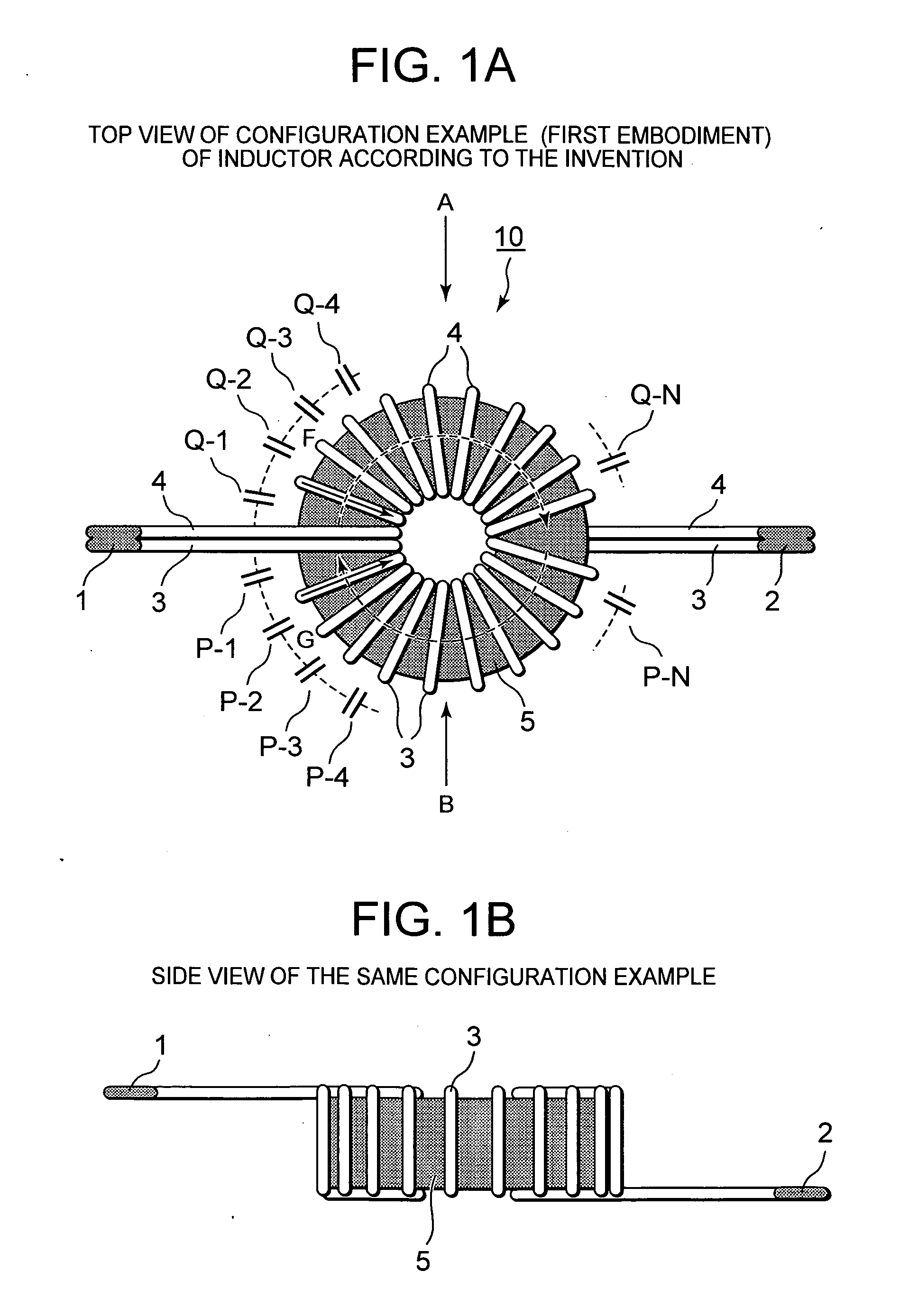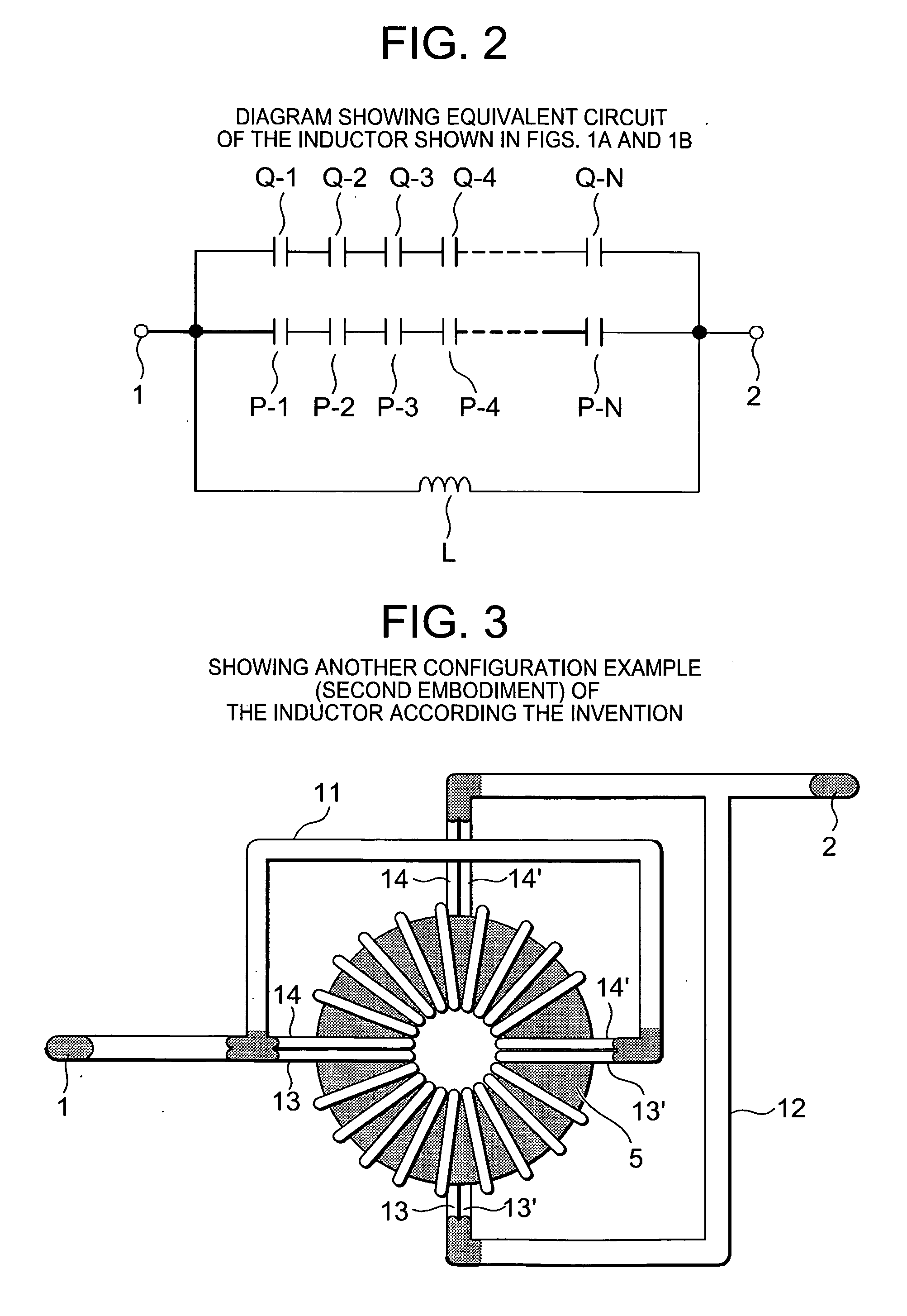Inductor
- Summary
- Abstract
- Description
- Claims
- Application Information
AI Technical Summary
Benefits of technology
Problems solved by technology
Method used
Image
Examples
first embodiment
[0045]FIGS. 1A and 1B are diagrams showing a configuration example (first embodiment) of an inductor according to the invention. FIG. 1A is a top view and FIG. 1B is a side view.
[0046]FIG. 2 is a diagram showing an equivalent circuit of the inductor shown in FIGS. 1A and 1B.
[0047]Also in this embodiment, a configuration in which a plurality of conducting wires are wound around a magnetic substance 5 is used fundamentally in the same manner as in the background-art inductor shown in FIGS. 4A and 4B. In an inductor 10 shown in FIGS. 1A and 1B, two conducting wires 3 and 4 are used to form windings. The opposite ends of each conducting wire 3, 4 are connected to shared terminals (leader lines 1 and 2), and the conducting wires 3 and 4 are connected in parallel between the leader line (terminal) 1 and the leader line (terminal) 2.
[0048]The reason why a plurality of conducting wires (two conducting wires 3 and 4 in this embodiment) are used is to increase the surface area and increase th...
second embodiment
[0079]In addition, the number of conducting wires used as windings is not limited to two but three or more conducting wires may be used. This will be described later with reference to FIG. 3 showing a configuration example (second embodiment). Here, modifications in the case where two conducting wires are used will be described below.
[0080]A first modification will be described below.
[0081]First, as described previously, when two conducting wires are used, a fundamental configuration is made in such a manner that the magnetic substance 5 is divided into two areas and the two conducting wires are wound around the two areas respectively. FIGS. 1A and 1B show an example where the two areas consist of the upper half area and the lower half area of the magnetic substance 5. As described above, in this example, a positional relationship of about 180 degrees as shown in FIGS. 1A and 1B is established between the leader line 1 and the leader line 2.
[0082]However, the configuration is not li...
PUM
 Login to View More
Login to View More Abstract
Description
Claims
Application Information
 Login to View More
Login to View More - R&D
- Intellectual Property
- Life Sciences
- Materials
- Tech Scout
- Unparalleled Data Quality
- Higher Quality Content
- 60% Fewer Hallucinations
Browse by: Latest US Patents, China's latest patents, Technical Efficacy Thesaurus, Application Domain, Technology Topic, Popular Technical Reports.
© 2025 PatSnap. All rights reserved.Legal|Privacy policy|Modern Slavery Act Transparency Statement|Sitemap|About US| Contact US: help@patsnap.com



